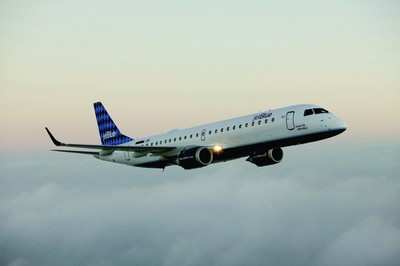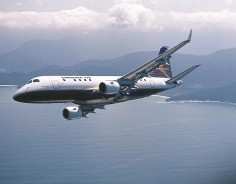Thu, May 30, 2013
Milestone Includes Some Seven Million Flight Cycles
After a little more than nine years in operation, the worldwide fleet of Embraer 170/190 family of E-Jets achieved a landmark 10 million flight hours, this month, with an average mission conclusion rate of 99.9% and the completion of seven million flight cycles.

“This milestone is particularly noteworthy, given the E-Jets’ relatively short average flight duration,” said Paulo Cesar Silva, President and CEO, Embraer Commercial Aviation. “The high utilization of the aircraft has contributed to reaching this mark just nine years after the first revenue flight. In fact, one of our customers is flying each of its E-Jets an average of 12 hours per day.”
The flight hours of the worldwide fleet began accumulating after the delivery of an E170 to LOT Polish Airlines, the first E-Jet operator, in March 2004. Since then, airlines throughout the world have discovered the capabilities of the aircraft family for operating in a wide range of business applications that are as diverse as the regions in which the aircraft fly.
The deployment of E-Jets is not limited to short-haul routes. Virgin Australia schedules its E190s on nonstop flights between Perth and the Cocos (Keeling) Islands, a leg that is in excess of four hours over water. Air Canada operates its E190s on some North American routes that take nearly five hours of flight time.

The E-Jets are designed for quick turnaround times on the ground that can take less than 20 minutes. This helps to increase daily utilization rates and has contributed to reaching the 10 million mark. Furthermore, these commercial jets can be monitored by the AHEAD-PRO diagnostic system, where technical faults are identified during flight, so that down-line stations can prepare for any necessary maintenance. This also reduces ground delays and keeps utilization at a high level.
With over 1,200 firm orders from airlines worldwide and nearly 1,000 jets delivered to more than 60 airline companies in 43 countries on five continents, the E-Jets family has carried around 460 million passengers.
(Images provided by Embraer)
More News
Aero Linx: Model Aeronautical Association of Australia MAAA clubs are about fun flying, camaraderie and community. For over 75 years, the MAAA has been Australia’s largest fl>[...]
Touchdown Zone Lighting Two rows of transverse light bars located symmetrically about the runway centerline normally at 100 foot intervals. The basic system extends 3,000 feet alon>[...]
“Discovery and innovation are central to our mission at Virgin Galactic. We’re excited to build on our successful record of facilitating scientific experiments in subor>[...]
How To Get A Story On Aero-TV News/Feature Programming How do I submit a story idea or lead to Aero-TV? If you would like to submit a story idea or lead, please contact Jim Campbel>[...]
Student Pilot Reported That During Rotation, “All Of A Sudden The Back Of The Plane Kicked To The Right..." Analysis: The student pilot reported that during rotation, “>[...]
 ANN's Daily Aero-Linx (05.02.24)
ANN's Daily Aero-Linx (05.02.24) ANN's Daily Aero-Term (05.02.24): Touchdown Zone Lighting
ANN's Daily Aero-Term (05.02.24): Touchdown Zone Lighting Aero-News: Quote of the Day (05.02.24)
Aero-News: Quote of the Day (05.02.24) ANN FAQ: Contributing To Aero-TV
ANN FAQ: Contributing To Aero-TV NTSB Final Report: Cirrus Design Corp SR20
NTSB Final Report: Cirrus Design Corp SR20




